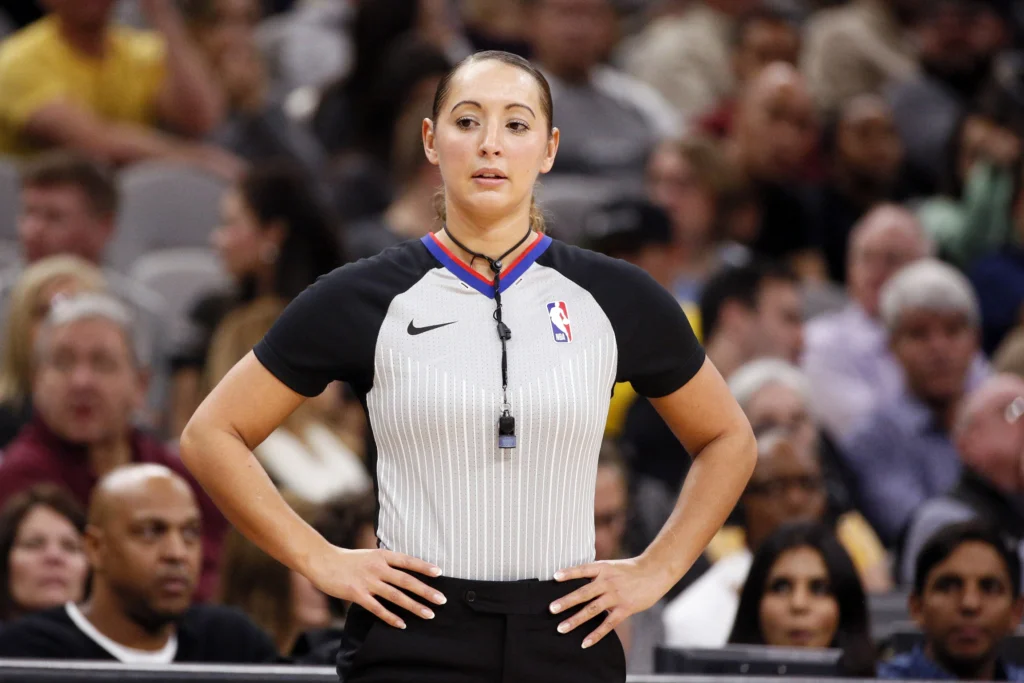On Friday, we learned that NBA referee Tim Donaghy is under investigation by the FBI for betting on NBA games. Here is how various media members have described this story.
Adrian Wojnarowsk of Yahoo! Sports writes that “The nightmare has forever lurked in commissioner David Stern’s mind… As the sun rose on the Vegas Strip this morning, where the best players in the world had gathered for a Team USA mini-camp, the doomsday scenario of fixed games hung over the league like an anvil.”
Marc Stein of ESPN.com says that “there have been some scandals through the years in the league, but nothing like this. Nothing close. Sooner than later, all hell is going to break loose. The NBA will never be the same again.”
Jack McCallum from Sports Illustrated.com states that “This can only be described as a horrific Friday for Stern and his National Basketball Association. The New York Post’s disclosure that the FBI is investigating a referee for betting on games and making calls to manipulate point spreads — a referee later identified by multiple ESPN sources as 13-year vet Tim Donaghy — will haunt this league for the foreseeable future.”
In reading the coverage of this scandal, you sense that the very future of the NBA is at stake. Here is a different perspective on this story.
The Black Sox Scandal
Let’s go back to the worst gambling episode in sports history. In 1919 members of the Chicago White Sox conspired to throw the World Series. This was not a few regular-season games. This was the championship of baseball pre-determined by players and gamblers.
One would suspect that such an event would threaten the very survival of Major League Baseball. Baseball fans would express their disgust with the sport and stay away in droves.
When we look at the data, though, this is not what we see. Here is a snapshot of the average annual attendance of a Major League Baseball team, beginning in 1919 and ending in 1933.
– 1919: 408,277
– 1920: 570,055 (record)
– 1921: 537, 957
– 1922: 551,011
– 1923: 542,025
-1924: 599,755 (record)
– 1925: 596,285
– 1926: 614,561 (record)
-1927: 620,179 (record)
– 1928: 568,893
– 1929: 599,261
– 1930: 633,266 (record, not broken until 1945)
– 1931: 529,194
– 1932: 435,910
– 1933: 380,564
The scandal occurred in 1919 but was not made public until the latter 1920s. So the first year we would see a significant impact is 1921. The average attendance drawn by a Major League Baseball team did drop in 1921 by 31,098 fans. But one should remember a substantial recession in 1920-21, with real per-capita Gross Domestic Product dropping more than 5% (comparing 1921 and 1919). So it’s possible that changes in the economy caused the drop.
Further evidence of the economy’s role can be seen when we look at the next decade. A new record was set in 1924, 1926, 1927, and 1930. And then attendance – with the advent of the Great Depression — went into a decline. By 1933 average attendance was nearly 40% below what we saw in 1930. It wasn’t until 1945 that the record seen in 1930 was surpassed.
What is the point of bringing up all these numbers? The data tells us that the Black Sox scandal did not impact consumer demand. At least, it appears that changes in the overall economy are much more critical.
If you take away the fan’s money, the fans stop coming to the games. But as long as the fans have money – gambling scandals, player strikes, owner’s lock-outs, and even steroids – they don’t threaten professional sports.
This would be clear if we understood the true nature of the game. The game that professional team sports are playing provides entertainment to their customers. As long as the product is entertaining and the fans have money, one should expect fans to be in the stands. And clearly, fans are finding professional sports to be very fun lately. Major League Baseball, the National Football League, the National Hockey League, and the NBA have all set attendance records for their most recently completed seasons.
The NBA’s Integrity Problem
The NBA is setting attendance records that should be surprising to the “doomsday” voices in the media. Long before the referee scandal broke, academic research had already questioned the integrity of the NBA’s contests. Beck Taylor and Justin Trogdon published a study in the Journal of Labor Economics in 2002 detailing how NBA teams were systematically losing to enhance the team’s draft position. The research of Joe Price and Justin Wolfers suggested that the player’s race influenced the calls NBA referees made.
To the best of my knowledge, the research of Taylor and Trogdon has never been addressed by the NBA. The NBA did commission a study to contradict the Price-Wolfers story. Initially, it was reported that the NBA’s study refuted the Price-Wolfers research. Later on, though, it was revealed that the NBA’s results could be interpreted as being consistent with the Price-Wolfers study.
What has been the impact of all this research questioning the integrity of the NBA? My sense is nothing has happened. The NBA either ignores it or dismisses its claims.
And why does the NBA take this action? The NBA is not in the “truth” business. The NBA is in the “entertainment” business. Because providing entertainment is the actual game the NBA is playing, these stories – which question the integrity of the game – are swept under the rug.
And these efforts are largely successful. Again, the NBA set an attendance record in 2004-05. Another record followed this in 2005-06 and 2006-07. Taylor and Trogdon have found evidence that the NBA’s losers were not doing their best to win games since the 1980s. But like the Black Sox scandal, the NBA’s integrity problems have had no apparent impact on consumer demand.
Crying Wolf
The media has an incentive to sensationalize each story it covers. We have heard that player strikes and lock-outs threaten the future of sports. Competitive balance in baseball must be resolved, or baseball will be doomed. Steroids must be addressed, or baseball will be forever harmed. And now, the NBA will never be the same because a referee has a gambling problem.
When we look at the attendance data, we see that the media is often a “crying wolf.” The fans’ reaction is just not consistent with the dire predictions of media members. And this is a problem. Although the media is also in the entertainment business, its consumers expect journalists to be interested in the “truth.” But time and time again, members of the media exaggerate the significance of the stories they cover. Perhaps that is the true “integrity” problem we should discuss.


